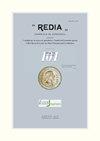匈牙利首次记录到与半病毒性果蝇(MÁCA,1977)有关的马氏布拉特菌(OUDEMANS,1929)
IF 0.8
4区 生物学
Q3 ZOOLOGY
引用次数: 3
摘要
Phortica属果蝇的雄性通常以动物和人类的泪腺分泌物为食,并在犬类囊线虫的传播中发挥作用(Thelazia callipaeda Railliet&Henry,1910),该线虫寄生在狗、猫、野生食肉动物,有时甚至人类的结膜囊中(MÁCA和OTRANTO,2014)。这种犬科线虫被称为东方眼形线虫,因为它最初的地理分布在广泛分布的远东地区。目前,T.callipeada正在从西班牙到匈牙利的欧洲大部分地区扩张(MARINO等人,2018,FARKAS等人,2018)。在欧洲,斑腹蛛(Fallén,1823)是唯一被证实的犬类叠层线虫的载体,然而,另一种斑腹蛛属物种半virgo(Máca,1977)也被认为是潜在的载体(MÁca和OTRANTO,2014)。迄今为止,从不同的苍蝇群中记录了几种螨类(SAMŠIŇÁK,19791989,PEROTTI和BRAIG,2009,MUMCUOGLU和BRAVERMAN,2010,PEREZ-LEANOS等人,2017),但与果蝇相关的螨类很少被调查。尽管已知中新世和上始新世(25-40 MYA)首次出现螨虫和果蝇共现的事实(POINAR和GRIMALDI,1990,ROSS 1998),但最近只出现了少数相关病例(POINAR和GRIMALDI,1990,LEHTINEN和ASPI,1992,PEREZ-LEANOS等人,2017)。在一项关于果蝇的当地动物区系研究的框架内,在半virgo Phortica的身体上发现了一些螨类标本。这种螨虫是Blattisocius mali(Oudemans,1929),直到今天匈牙利才有报道。马里B.mali与果蝇的联系鲜为人知,只有LEHTINEN和ASPI(1992)提供了一些来自芬兰的记录,但没有人发现这种螨与果蝇Ph.semivirgo的联系。本文章由计算机程序翻译,如有差异,请以英文原文为准。
FIRST RECORD OF BLATTISOCIUS MALI(OUDEMANS, 1929) IN HUNGARYASSOCIATED WITH THE DROSOPHILID FLY PHORTICA SEMIVIRGO(MÁCA, 1977)
The males of drosophilid fruitflies of Phortica genus usually feed on the lacrimal secretions of animals and humans and play a role in the transmission of the canine thelaziosis nematode (Thelazia callipaeda Railliet & Henry, 1910), which parasitizes the conjunctival sac of dogs, cats, wild carnivores and sometimes even humans (MÁCA and OTRANTO, 2014). This canine thelaziosis nematode has been known as oriental eyeworm since its original geographical distribution is in the Far East where it is widely distributed. For now, T. callipeada is in expansion in large parts of Europe from Spain to Hungary (MARINO et al., 2018, FARKAS et al., 2018). In Europe, Phortica variegata (Fallén, 1823) is the only confirmed vector of the canine thelaziosis nematode, however, the other Phortica species, Ph. semivirgo (Máca, 1977), is also mentioned as a potential vector (MÁCA and OTRANTO, 2014). Till today several mite species are recorded from different groups of flies (SAMŠIŇÁK, 1979, 1989, PEROTTI and BRAIG, 2009, MUMCUOGLU and BRAVERMAN, 2010, PEREZ-LEANOS et al., 2017), but the mites associated with drosophilids are scarcely investigated. Despite the fact that the first cooccurrence of mites with drosophilid flies are known from the Miocene and Upper Eocene (25-40 MYA) (POINAR and GRIMALDI, 1990, ROSS 1998), only a few recent cases of associations are presented (POINAR and GRIMALDI, 1990, LEHTINEN and ASPI, 1992, PEREZ-LEANOS et al., 2017). In the framework of a local faunistic study on drosophilids, some mite specimens were found on the body of Phortica semivirgo. This mite species was the blattisociid Blattisocius mali (Oudemans, 1929) which was not reported from Hungary till today. The association of B. mali with drosophilid flies is poorlyknown, only LEHTINEN and ASPI (1992) presented some records from Finland, but nobody found the association of this mite with the drosophilid fly Ph. semivirgo.
求助全文
通过发布文献求助,成功后即可免费获取论文全文。
去求助
来源期刊

Redia-Giornale Di Zoologia
ZOOLOGY-
CiteScore
1.20
自引率
20.00%
发文量
18
审稿时长
>12 weeks
期刊介绍:
Redia supports its long history of basic and applied research in entomology and invertebrate zoology in the field of crop and forest tree protection responding at the same time to the increasing need of innovation and technological improvement.
 求助内容:
求助内容: 应助结果提醒方式:
应助结果提醒方式:


